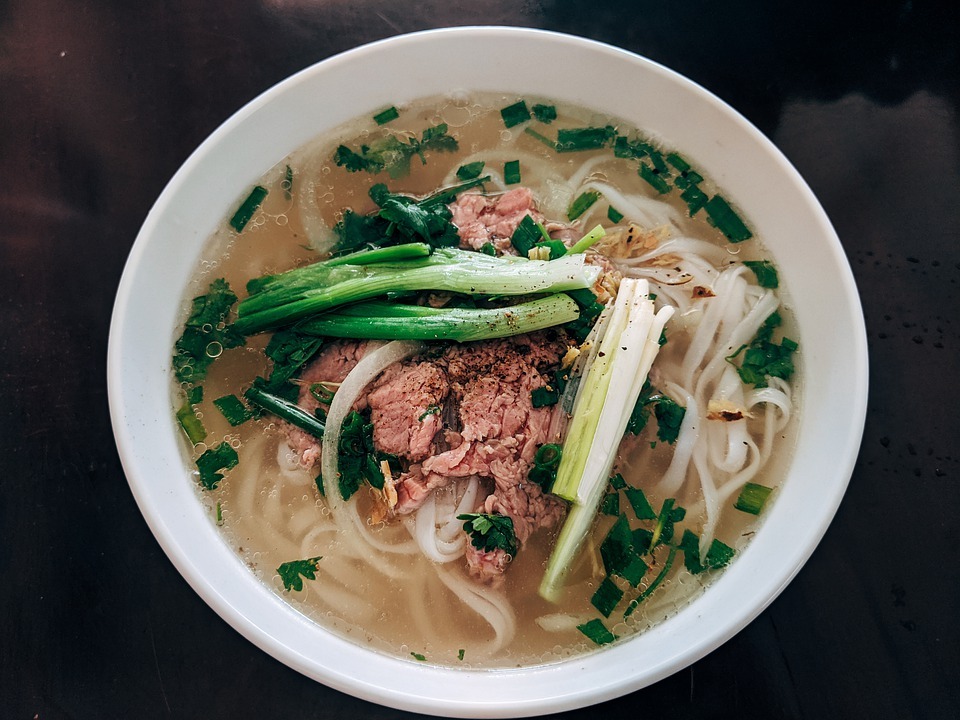Vietnamese cuisine is underrated when compared to other Asian cuisines, as its dishes can be considered less popular than Korean, Japanese, and Chinese dishes. Most people would often have the notion that Vietnamese cuisine is primarily comprised of leafy vegetables because of the abundance of green in popular Vietnamese dishes like pho or bahn mi, but what they don’t know is that Vietnamese cuisine actually seeks balance in their ingredients, so there is actually a balance between meat and vegetables in every dish. To know more about how the dishes achieve this “balance,” let us take a look at some of the key characteristics of Vietnamese food culture.
The Five-Element Correspondence
The Vietnamese food culture is focused on following the five-element correspondence, which is comprised of the elements metal, wood, water, fire, and earth. By using these elements in making every dish, the Vietnamese will be able to create harmonious food that can be enjoyed to the fullest. The five-element correspondence can also be found in how the Vietnamese use spice, as there are also five taste senses that they should have in the food, and these senses are sweet, sour, bitter, spicy, and salt.
From there, you can see that Vietnamese cuisine has five fundamental elements followed for every dish. These five elements are also found in the colors used for the dishes, like white, red, black, yellow, and green, and these colors also correspond to the five basic elements mentioned above. It is also said that you would need to use your five senses in order to properly enjoy eating a meal. The senses you will use is your eyes to see the beauty of the food, your ears to hear the sound of the food while you are eating it, your nose to smell the aroma of the meal, your fingers to touch the texture of the food, and your tongue to taste the wonderful flavors of the dish.
Yin-Yang
The Vietnamese often seek balance in the food that they eat, which is why the yin-yang symbol is often followed or replicated in every dish that they serve. On a plate, you would often see that most Vietnamese dishes are served with leafy vegetables on one side and a meaty portion of the other side, and this shows you the balance that they implement in food where you can get healthier portions through the vegetables and savory but not so healthy portions through the meat.
Furthermore, the yin-yang balance in Vietnamese cuisine also follows the notion that one portion of the food should be “cool,” while the other portion should be “hot.” For example, vegetables are supposed to be the “cool” ingredients since they are served fresh and raw, while meats are supposed to be “hot” because they are cooked first before serving. The “hot and cool” balance can also be applied to the greasiness of the meat served. If the meat used for the dish is too greasy, then it must mean that it should be served with more vegetables to balance out the “unhealthiness” of the meat.
Regional Diversity
While the five-element correspondence and the yin-yang balance are followed almost anywhere in Vietnamese, there is still diversity in how every region cooks and serves several Vietnamese dishes. If you visit Vietnam, you would see that each region in the country would have the same dish but with different ingredients used.
One of the popular dishes that would have regional differences in ingredients is pho, a noodle soup dish that is similar to ramen but with more vegetables. There are two kinds of pho that are served in Vietnam, the first being Northern Pho while the other is Southern Pho. Most Vietnamese people consider Northern Pho to be the “original” and “traditional” pho, as it is believed to be the first version of pho, and it uses fewer ingredients compared to Southern Pho. So, you could say that Northern Pho is the simplest version that has fewer vegetables and meat.
On the other hand, Southern Pho is often packed with ingredients. The ingredients for Southern Pho are so abundant that some of them are even served on a separate plate to avoid spilling the soup. Southern Pho is regarded as the “modern” pho because it uses a variety of ingredients that are not found in pho traditionally, such as thinner noodles, Thai basil, and the optional hot sauce. However, Southern Pho is also considered to be the more popular variant amongst tourists, as it has flavors that suit their palate more. So, if there are pho restaurants in your location, there is a higher chance that the pho that they are serving is the southern variant.
These characteristics perfectly describe the entirety of Vietnamese cuisine. The dishes created in the country strictly follow the teachings that stem from their culture, like the yin-yang balance and the five-element correspondence, which they also follow in their daily living and not just in food. Once you visit Vietnam, you will be able to get a glimpse of their culture by eating some of their most popular dishes.

